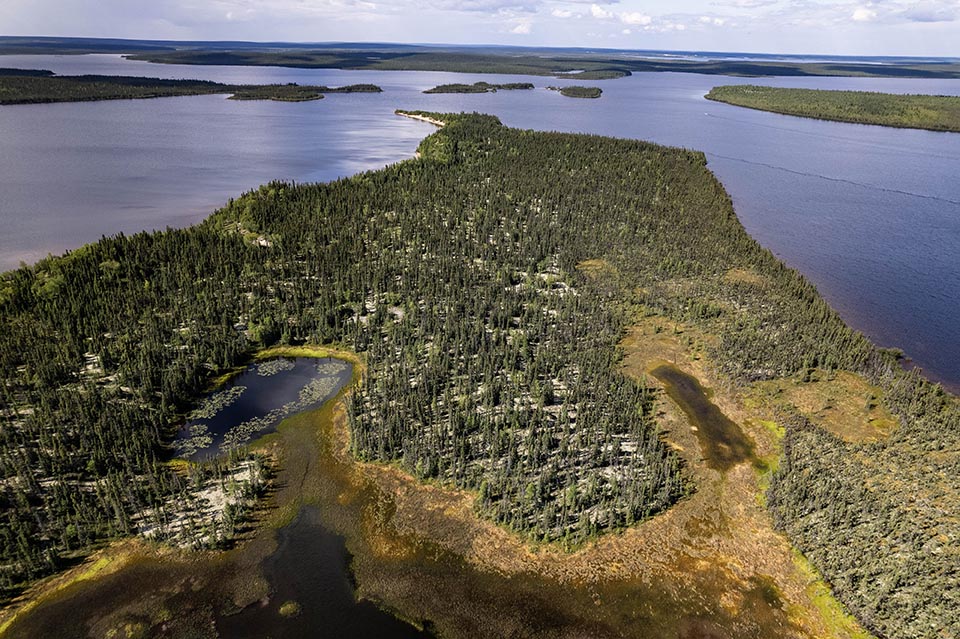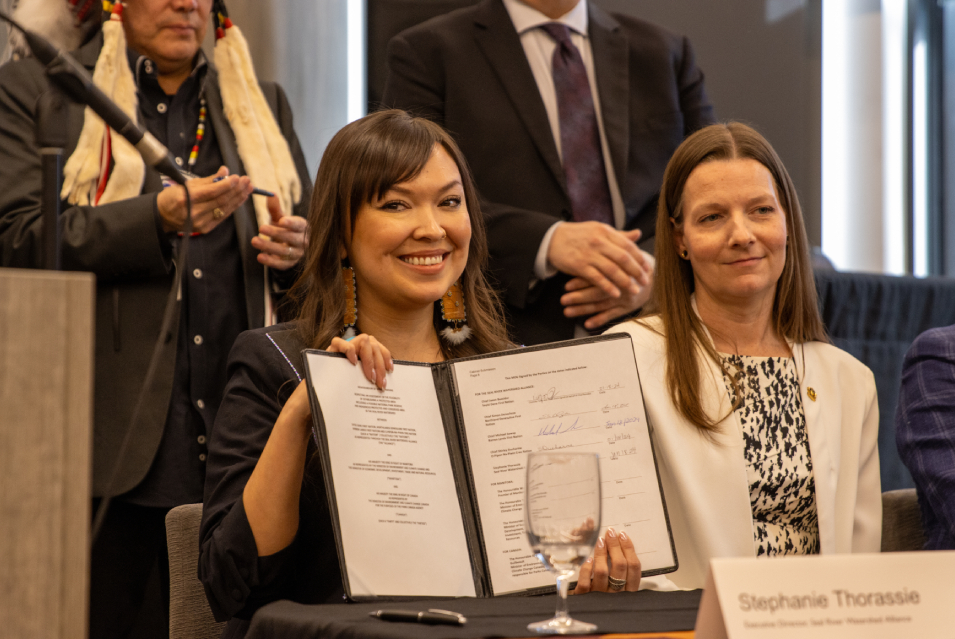
Seal River Watershed (Manitoba)
On this page
Feasibility assessment for an Indigenous Protected and Conserved Area and potential national park reserve
The Seal River Watershed in northern Manitoba covers around 50,000 km2. This landscape is one of the world's largest ecologically intact watersheds. The Seal River Watershed is the ancestral territory of many Indigenous nations and communities, including:
- Sayisi Dene First Nation
- Northlands Dene Nation
- Barren Lands First Nation
- O-Pipon-Na-Piwin Cree Nation
These First Nations make up the Seal River Watershed Alliance. They collaborate to support the protection of the watershed as an Indigenous Protected and Conserved Area.
The cultures and languages of these 4 First Nations are rooted in their relationship to the caribou, moose and fish, and the land and water. Protecting and conserving the watershed means protecting the spirit of their people, who have been stewards of the region since time immemorial. The Alliance envisions an intact watershed where people, animals and fish are healthy. One where the unique languages and cultures are thriving, and there is hope and abundance for all future generations.
About the region
A Canadian Heritage River
The Seal River was nominated to the Canadian Heritage River System in 1987 and formally designated a Canadian Heritage River in 1992. This 260 km river is unhindered by dams and industrial development, flowing freely into Hudson Bay. Protecting the Seal River watershed would ensure the land, lakes, rivers and streams from which water flows into the Seal River are protected.
Nature
There are at least 25 known species at risk within the region. This includes wolverines, polar bears, grizzly bears, barren-ground caribou, and olive-sided flycatchers. A population of harbour seals can be found as far as 200 km inland from the mouth of the Seal River, giving the river its name.
Within the Seal River watershed there are large wetland areas that act as carbon “sinks”. These wetlands are important in offsetting the effects of climate change. Carbon sinks absorb carbon dioxide from the atmosphere and store it in trees, soils, mosses, and phytoplankton that live in water.

Current project stage
There is no rigid process for establishing new national parks. Each proposed project is unique and reflects local circumstances. The standard sequence, however, is framed by five steps.
This project is currently at step 3 of 5:
Assessing the feasibility of a national park, including consultations
-
Completed1 Identify representative natural areas
-
Completed2 Select a potential area
-
Current step3 Assessing the feasibility of a national park, including consultations
-
4 Negotiating agreement(s)
-
5 Establishing a national park under the Canada National Parks Act
On January 18, 2024 in Winnipeg, Manitoba, the Seal River Watershed Alliance and the Governments of Canada and Manitoba signed a memorandum of understanding (MOU) to formally work together on a feasibility assessment for an Indigenous Protected and Conserved Area (IPCA) and potentially, a national park reserve (NPR), in the Seal River Watershed.
The MOU included a commitment for temporary protection from mineral exploration and staking for the duration of the feasibility assessment. This will help to gain a better understanding of the area’s geological attributes.

The focus of the feasibility assessment stage is to understand the issues and concerns of all interested parties and to identify opportunities and challenges. This is done through an information gathering process that incorporates Traditional Knowledge, science and feedback from public consultations.
Working together, the Seal River Watershed Alliance and the Governments of Canada and Manitoba are taking action to assess and protect this iconic natural and cultural landscape for future generations.
Timeline and next steps
Following the feasibility assessment, if all parties agree that establishing an IPCA and potentially a NPR is feasible and desirable, the next step will be to negotiate an establishment agreement.
- Date modified :